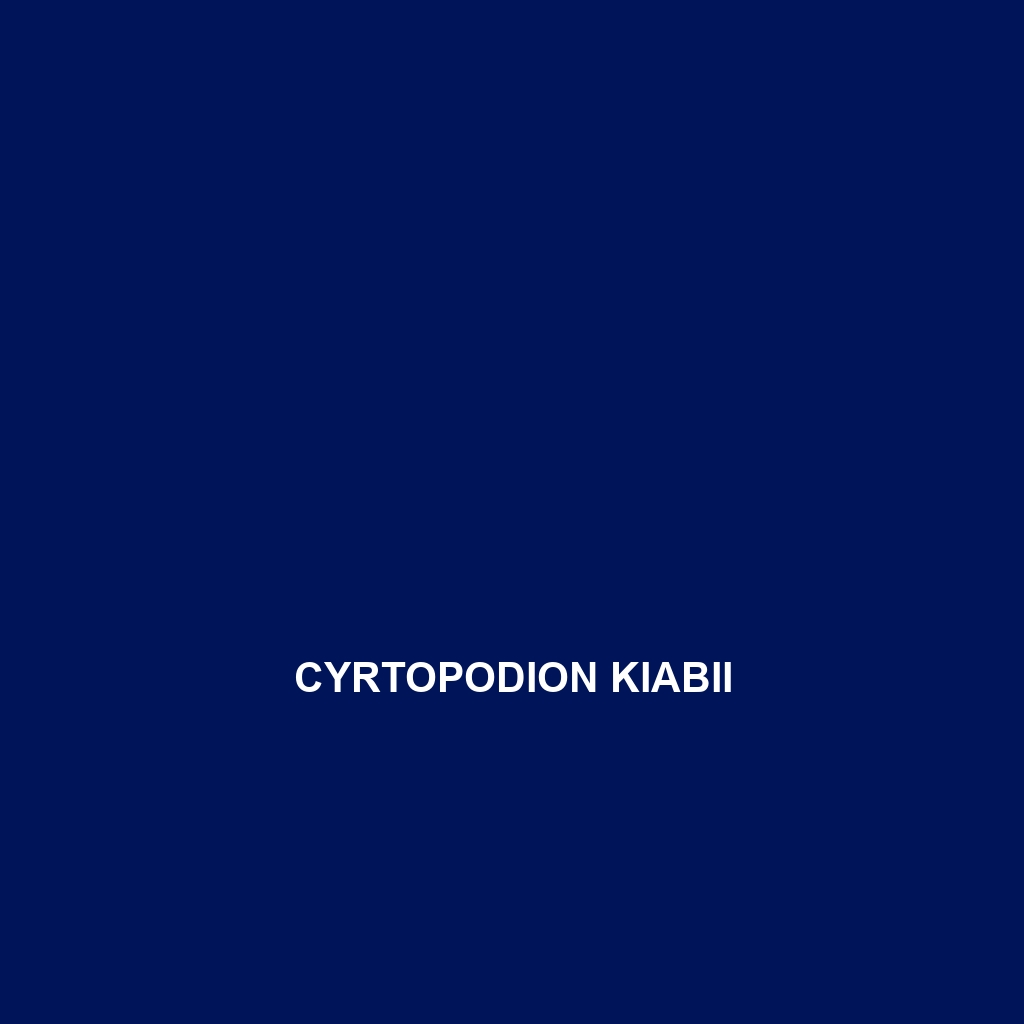Cyrtopodion kiabii: An Overview
Common Name: Cyrtopodion kiabii
Scientific Name: As per recent classifications
Habitat
Cyrtopodion kiabii is primarily found in the rocky and arid regions of Iran, particularly within the southeastern parts. This species thrives in environments characterized by sparse vegetation, gravelly plains, and rocky outcrops, which provide essential cover and hunting grounds. The unique climatic conditions of this habitat, with fluctuating temperatures and limited moisture, contribute to the ecological niche this species occupies.
Physical Characteristics
Cyrtopodion kiabii exhibits a range of physical traits that distinguish it from other gecko species. Typically, this gecko reaches a size of approximately 8 to 10 centimeters in total length. Its coloration varies, featuring a blend of browns and grays that enables effective camouflage against rocky environments. The species has a flattened body shape, large, rounded eyes, and distinct toe pads that enhance traction on uneven surfaces. Notably, the presence of granular scales is a key feature of this gecko.
Behavior
The behavior of Cyrtopodion kiabii is fascinating, as it showcases a primarily nocturnal lifestyle. During the night, these geckos are highly active, using their keen eyesight to hunt for insects and other small invertebrates. They are known to exhibit territorial behavior, especially males, and can often be seen engaging in displays of dominance to secure their area. Their ability to blend seamlessly with their environment enhances their survival, making them elusive to both predators and researchers alike.
Diet
Cyrtopodion kiabii is primarily insectivorous, with its diet consisting largely of crickets, beetles, and other small arthropods. This gecko employs a sit-and-wait strategy in prey capture, camouflaging itself and pouncing on unsuspecting insects. This feeding behavior not only contributes to its survival but also aids in controlling insect populations within its habitat.
Reproduction
The reproductive habits of Cyrtopodion kiabii are notable, with breeding typically occurring in the spring. Females lay eggs in hidden locations, preferably under rocks or within crevices, to protect them from potential threats. Each clutch usually contains one or two eggs, and the incubation period can last several weeks. The hatchlings emerge fully formed and independent, ready to fend for themselves in their challenging environment.
Conservation Status
Currently, Cyrtopodion kiabii is classified as Vulnerable due to habitat loss and the pressures of climate change. Conservation efforts are essential to protect this unique species and its habitat, emphasizing the need for sustainable land management practices that can mitigate further risks to their population.
Interesting Facts
One of the most intriguing aspects of Cyrtopodion kiabii is its ability to adapt to extreme environmental conditions. Researchers have observed that this species can tolerate temperature fluctuations that would be detrimental to many other reptiles. Furthermore, their unique vocalizations during mating season contribute to species identification and social interactions.
Role in Ecosystem
Cyrtopodion kiabii plays a crucial role in its ecosystem as both a predator and prey. By controlling insect populations, they help maintain the balance of their environment. Additionally, they serve as a food source for larger predators, such as birds and snakes, thus contributing to the local food web. Understanding their role enhances the importance of conserving this species and its habitat for ecological health.
